Experts warn, however, long-term population decline will continue
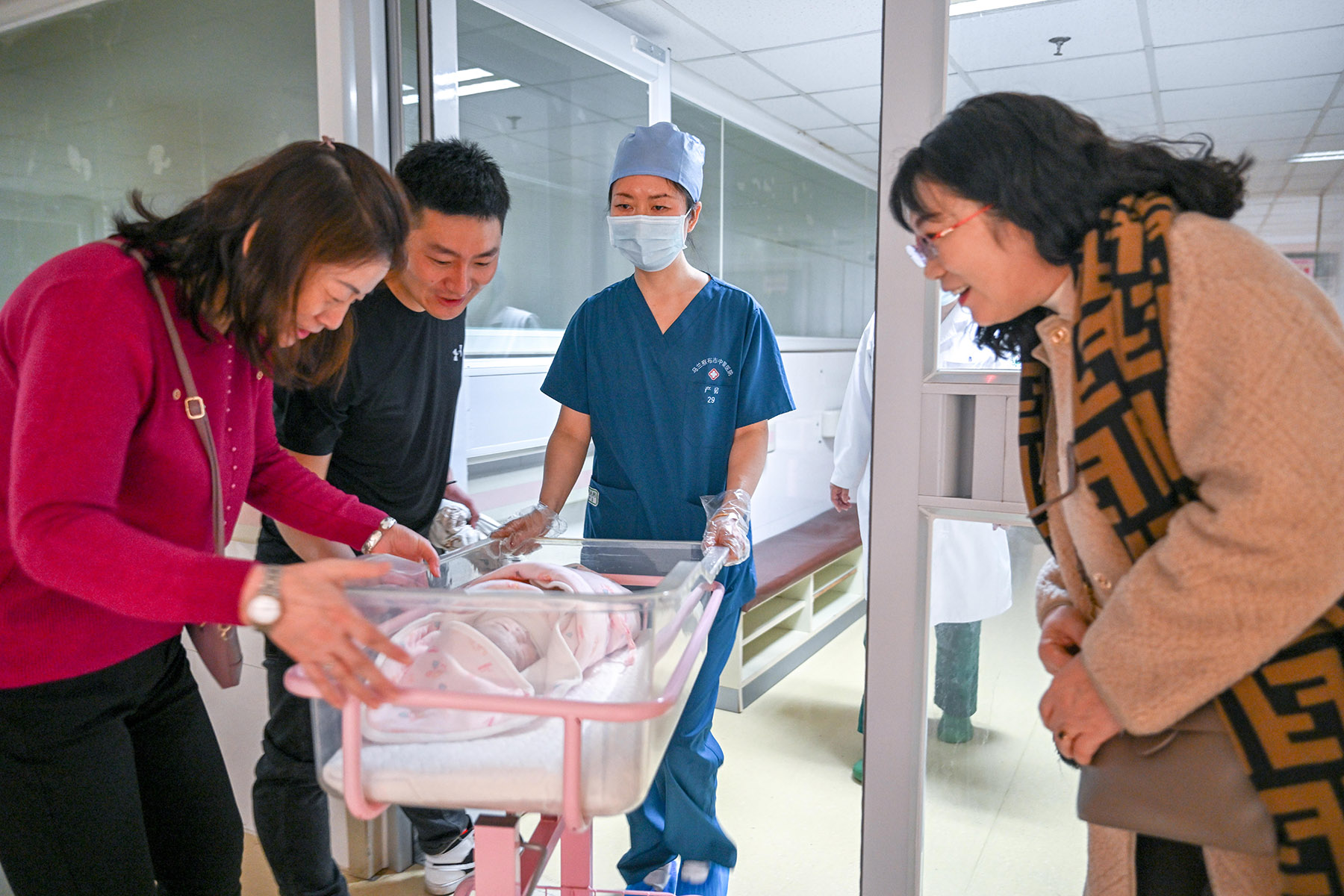
When she began her in vitro fertilization treatment at a hospital in Jiangsu province last year, Ma Li chose the time carefully to try to ensure her baby would be born in the Year of the Dragon, which started on Feb 10.
"Of the 12 animal signs of the Chinese zodiac, my favorites are the dragon and the pig because they symbolize success, wealth and good fortune," she said. "Besides, my zodiac sign of rooster is the most compatible with either the dragon or the tiger."
Ma initially wanted her first child to be a tiger baby born in 2022, but the COVID-19 pandemic postponed her birth plans.
"I was infected twice during the pandemic and I did not dare take the risk when it comes to having a baby," said the 31-year-old.
The number of newborns in China has been falling for seven consecutive years, but this year a 'baby bump' is expected as mothers like Ma are eager to give birth to children with an auspicious zodiac sign.
READ MORE: New Shanghai policy seeks to encourage childbirth
The end of the pandemic and a rebound in new marriage registrations for 2023 could further boost the country's birthrate, experts said.
"Chinese people have a strong preference for zodiac signs, and we saw a small baby boom in the previous Year of the Dragon in 2012," said Zhai Zhenwu, president of the China Population Association.
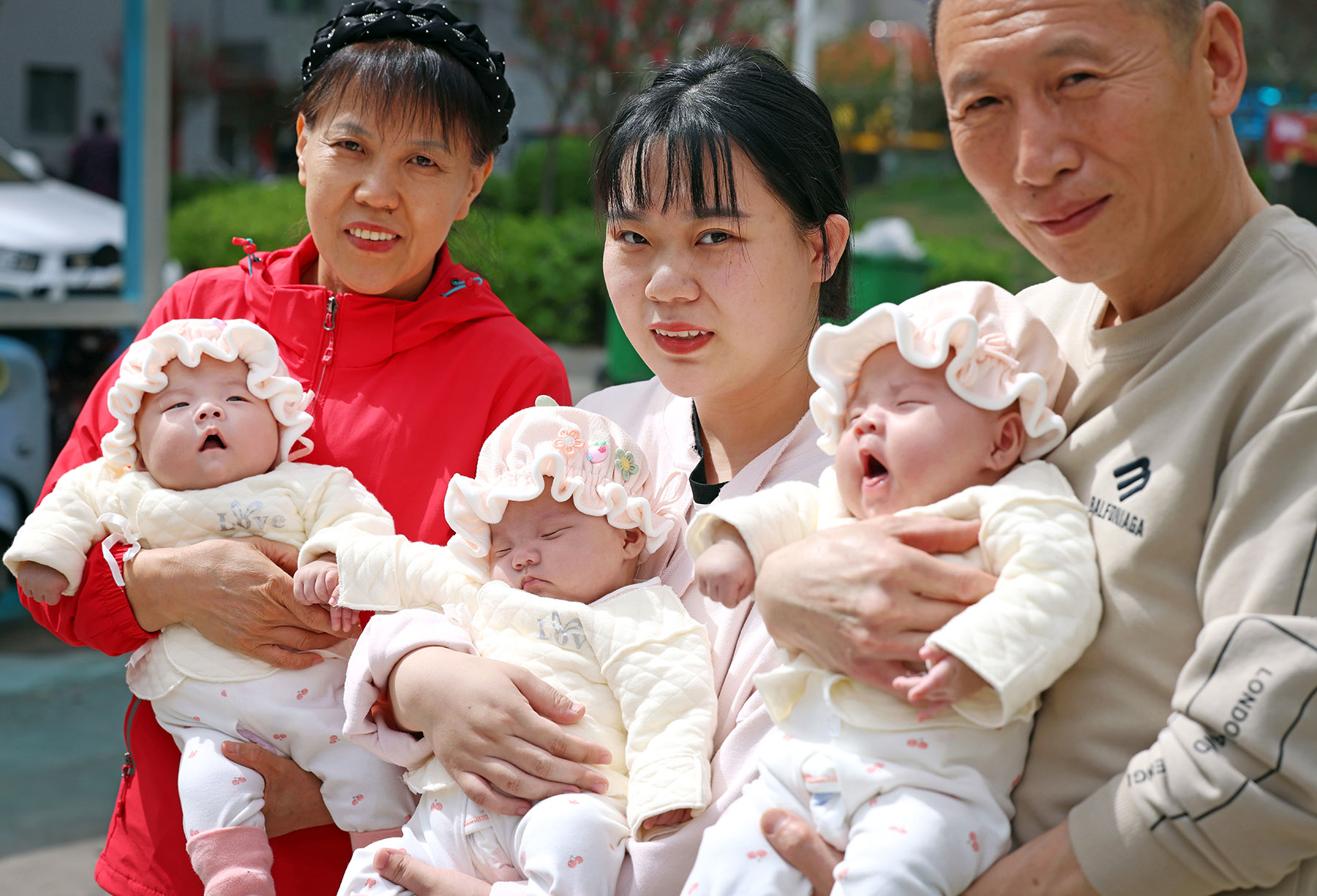
The number of newborns in 2012 topped 19.7 million, compared with around 17.8 million for the year before it and the one after, according to National Bureau of Statistics data. "The birthrate for 2024 is expected to increase," Zhai said.
However, despite slight changes in yearly fertility rates, China's total population will keep trending downward at a mild pace, experts said. Last year, the nation recorded the second consecutive annual decline in its total population.
"The Year of the Dragon and the end of COVID-19 will probably ease the decline for 2024, but the die is cast in terms of the nation's total population falling in the long run," said Yuan Xin, a demography professor at Nankai University in Tianjin.
Delays in getting married and having children, coupled with an unwillingness to have babies due to the pressure of raising children, are important factors contributing to decreasing fertility rates.
Obstetricians said the increase in the age of new mothers means more efforts are needed to improve treatment for high-risk mothers and newborns. Meanwhile, demographers have suggested accelerating efforts to build systems to support fertility, and reducing the costs of raising and educating children. This will enable families to better cope, and also help achieve an appropriate national fertility rate.
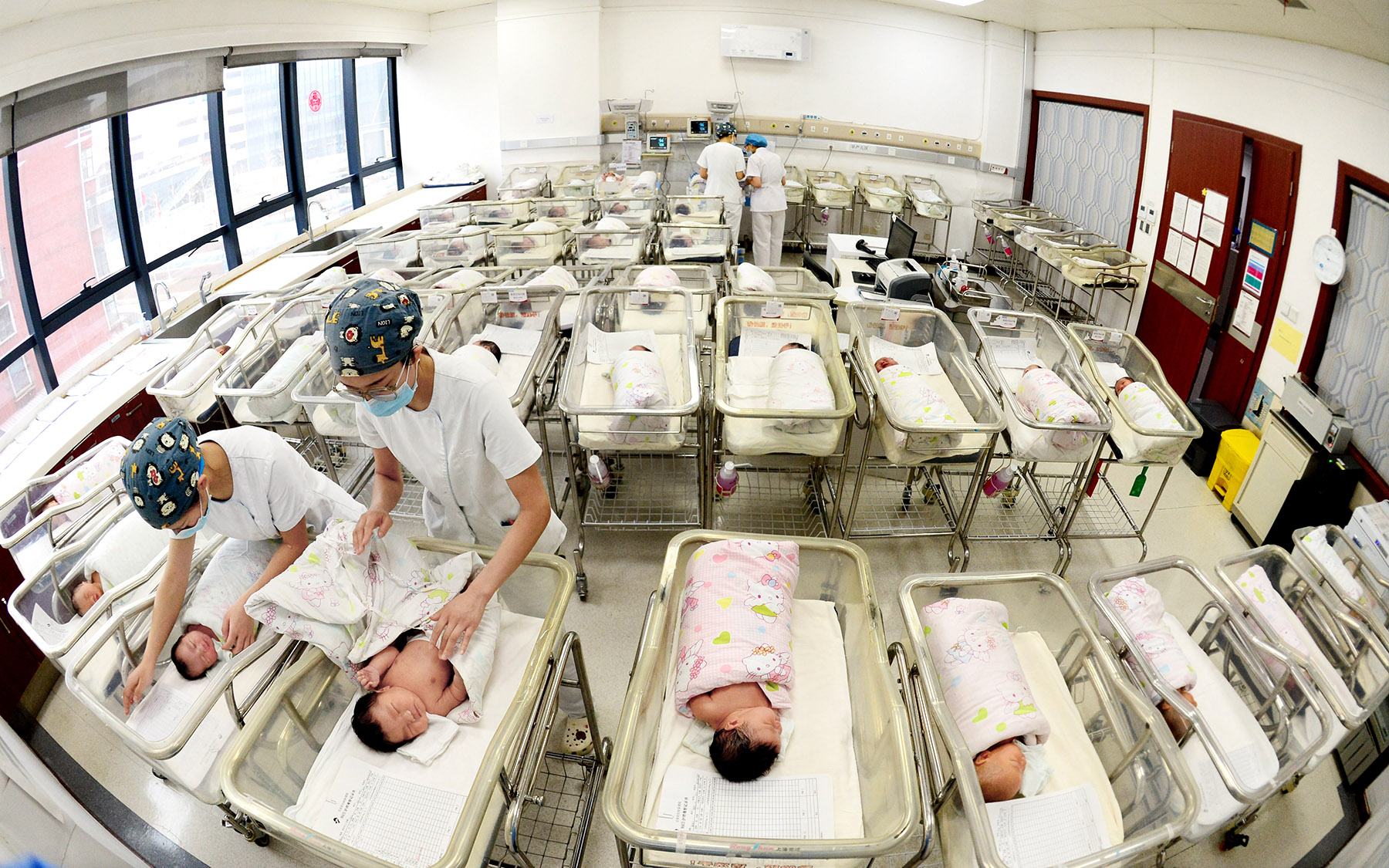
Roaring numbers
Some hospitals have already reported marked increases in treatment of pregnant women and babies being delivered since late last year. Nannies and postpartum centers are receiving a growing number of inquiries and operating at almost full capacity.
Jiang Haili, an obstetrician at Beijing Obstetrics and Gynecology Hospital affiliated to Capital Medical University, said that the number of newborns in their maternity ward has been climbing since last November.
"Nowadays, we deliver around 15 to 20 babies each day, or about 600 each month, compared with 400 during the low period of last year," he said.
"I think the rise has a lot to do with the COVID-19 pandemic," Jiang said, adding that many couples were hesitant about having a baby during the outbreak due to concerns about the virus' impact on pregnant women and the health of newborns.
"Besides that, we have seen the launch of the third-child policy and a series of new measures to support births in recent years, such as the inclusion of fertility treatments in medical insurance programs in some regions," he said. "The dragon zodiac sign is also associated with many positive blessings and many couples are fond of dragon babies."
During the most recent peak in the number of newborns in 2016 — when China implemented the second-child policy that allows all couples to have two children, the ward saw about 15,000 to 17,000 new births a year, he said.
"Our maternity ward is still fully equipped with over 80 medical personnel as it was during the peak, so handling the slight rise in new births this year presents no challenges," he said.
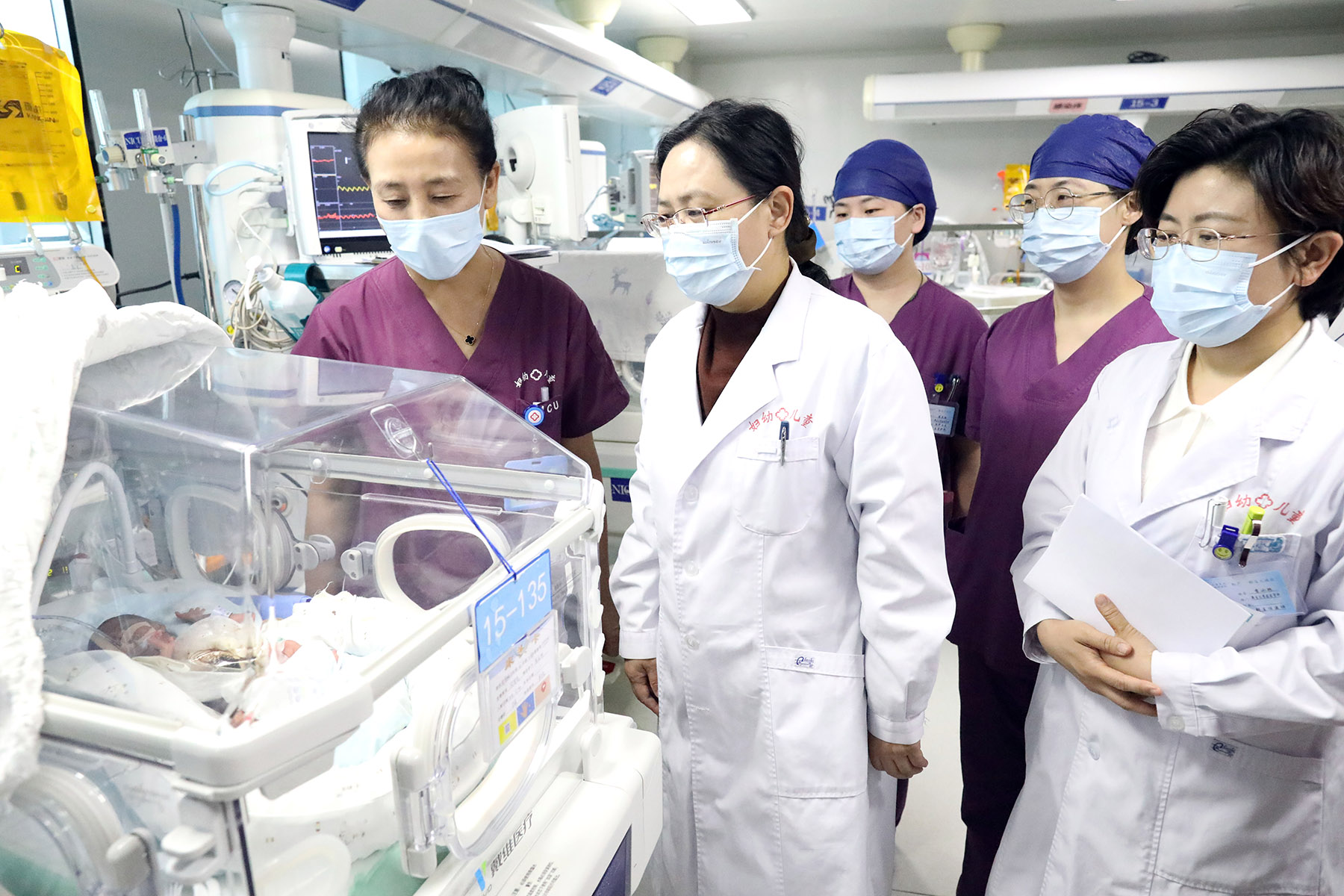
Kang Wenjuan, president of the Children's Hospital of Shanxi, Shanxi province, said the current situation was similar to 2017 when there was a bump in new births in the year after the rollout of the second-child policy. Shanxi province recorded 400,000 newborns that year, almost double the number for 2023, data shows.
"This year's total number of newborns across the province is estimated to be higher at around 210,000…we are already seeing a rise in pregnant women confirmed through pregnancy tests," she said. "To cope with the increase, we have stepped up training of medical personnel and launched remote diagnosis platforms to boost our services."
Zhang Jianlin, manager of the Taiyuan Chimei Postpartum Center in Taiyuan, Shanxi, said the center has seen a surge in requests so far this year. "Our facility has 28 villas and 150 suites. From January to March, our beds were completely full," he said.
Ma Xiaobei, head of the Laikang Maternal and Child Care Center in Langfang, Hebei province, said that the facility is almost fully booked until the end of this year, prompting it to start providing home services.
"Expectant mothers usually make reservations six months ahead of their due date," she said. "During the COVID-19 pandemic, we seldom saw full bookings for an entire month, but this year is different. The volume of orders has gone up by 30 percent compared with the previous year."
She said many couples consider it auspicious to have a dragon baby this year. "The center held an event to celebrate the births of the earliest dragon babies coming here," Ma said.
However, she also believes that China's birthrate will continue to decline in the long run. "The focus of our business in the future will be probably serving a smaller number of clients with higher quality services," she said.
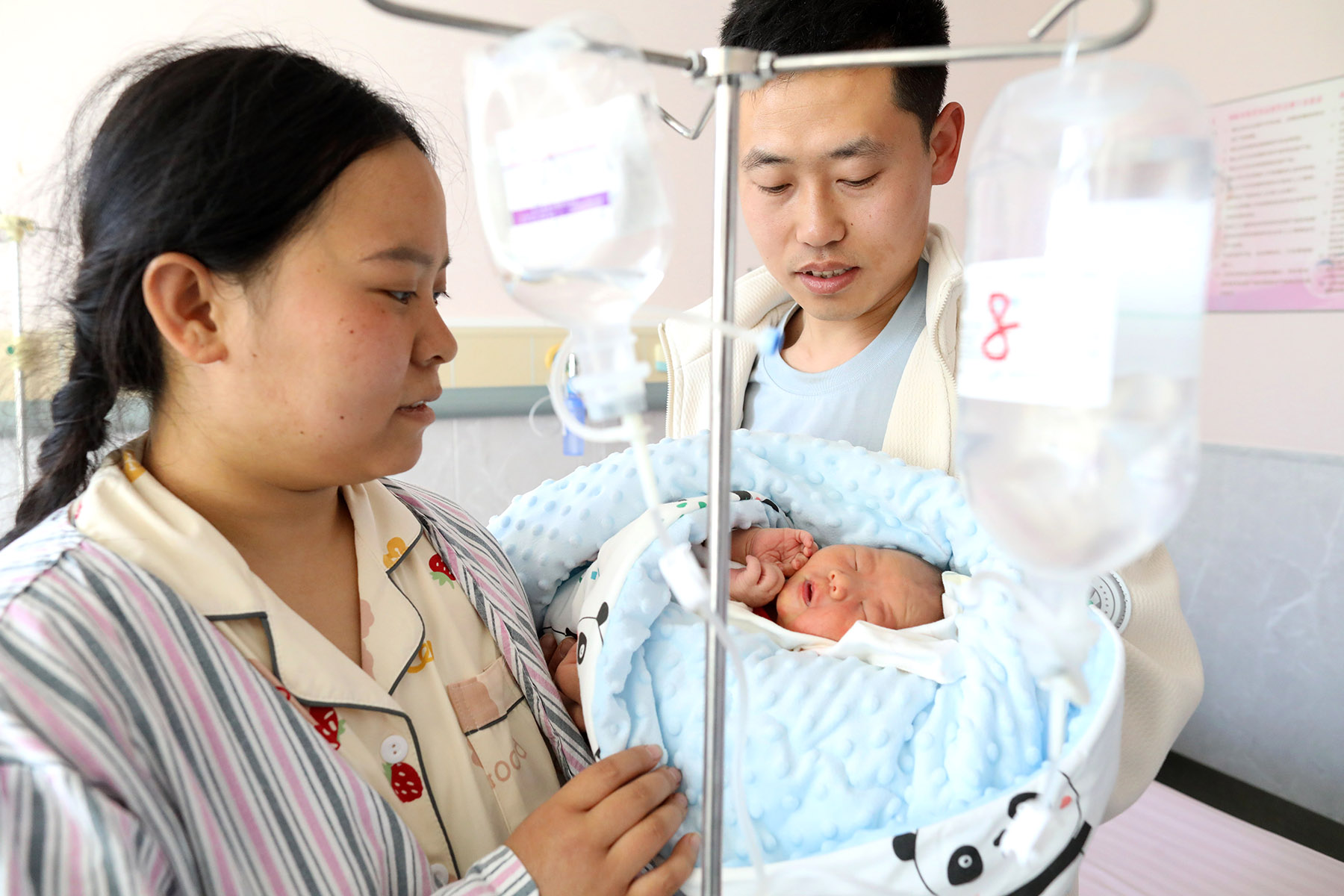
Older mothers
The average marriage age of women rose from 22 years in the 1980s to 26.3 in 2020, official data shows. Women are also giving birth to their first child later in life, at the average age of 27.2.
"My observation is that women usually have their first baby at around 30 years of age. The number of second children is rising, but we seldom see women having a third child," said Kang, the hospital president in Shanxi.
"Mothers who give birth a second time are usually older compared to first-timers, which also poses challenges for doctors to ensure their safety," she said.
Kang said guaranteeing safety during pregnancy and preventing birth defects are of great significance as the nation has highlighted the high-quality development of the population.
"It is important to determine whether a child might be born with defects early in the pregnancy through comprehensive tests. With the declining birthrates these days, it is even more important to ensure that each baby born is healthy," she said.
Ji Yong, head of the hospital's neonatal intensive care unit, said that nearly all babies in the province born in critical condition are sent to the facility for treatment.
"Unlike adults, infants cannot express their discomfort and can only cry," she said.
"It is crucial for us to provide meticulous management, special care in incubators, and create a womb-like environment for babies. We weigh them daily, measure their length weekly and monitor their medication intake and physical condition every 12 hours," she said.
Zhang Yanling, head of the obstetrics department at Shanxi Provincial People's Hospital, said that the majority of mothers giving birth at the hospital are aged 30 to 35.
"At our hospital, we rarely see pregnant mothers aged 20 to 25. Those aged 25 to 30 make up around 35 percent, and those aged 30 to 40 account for 43 percent," she said.
Zhang added that more than 70 percent of babies are a mother's first child, while second children make up over 20 percent.
Jiang, the obstetrician in Beijing, said that the proportion of high-risk pregnant women — those aged 35 or older with high blood pressure, elevated blood sugar levels, and other existing illnesses — is on the rise.
"The most significant change lies in the number of pregnant women aged above 40. This morning alone, I received five such cases," he added.
Shen Haiping, deputy director of the National Health Commission's Department of Maternal and Child health, said at a recent news conference that more efforts will be made to carry out pregnancy risk assessments and categorize and manage pregnant women based on their risk levels.
She added it is important to formulate individual treatment plans for at-risk pregnant women.

'Compensatory newborns'
The fertility plans of women of childbearing age in China have remained unchanged despite the announcement of the third-child policy, according to a study released in January by the China Population and Development Research Center and Chinese Academy of Social Sciences' Institute for Population and Labor Economics.
The effects of the second-child policy are also waning, the researchers found.
"Due to the COVID-19 pandemic's suppression of fertility from 2020 to 2022, it is estimated that there will be a certain number of compensatory childbirths from 2023 to 2025, and a slight rebound in the fertility rate and the number of newborns," it said. "But the dominant trend of delaying first marriages and childbirth will continue."
The number of "compensatory newborns" — those born to families who postponed having children due to the outbreak — is expected to be no more than 2 million in total, it added.
Policymakers should focus on the growing average age of people tying the knot and having children for the first time, as well as the rising number of women who never get married and choose to never have children.
A lack of robust fertility supportive policies, delays in first marriages and first childbirths, along with women choosing to remain single and childless "will have a major impact on fertility levels in the future," the study said.
ALSO READ: Gender gap narrowing, says report
Declining birthrates are affecting many countries around the world, He Dan, director of the China Population and Development Research Center, said in a signed article in March. In 45 countries and regions, fertility rates had dropped to below 1.5 by 2021, while the rate in China dropped to an extremely low level during the pandemic, she said.
The number of children that women of childbearing age considered ideal was 1.86 in 2022, which was 0.7 higher than the actual fertility rate, He said. Difficulties in their lives, unsure expectations for the future, changing social norms on the value of families to contemporary society, and a tendency among couples to take a wait-and-see attitude toward childbearing, accounted for "80 percent of these unmet fertility intentions", she said.
China has launched a string of measures to encourage births, but it will take time for the effects to show and existing measures are insufficient to meet public expectations, He said. She suggested improving basic services in fertility insurance, infant care and nursery care to help couples strike a balance between career development and building a family. Reforms in education, housing and healthcare also need to be advanced to reduce child care costs, He added.
Contact the writers at wangxiaoyu@chinadaily.com.cn



